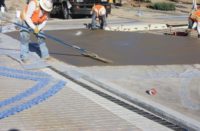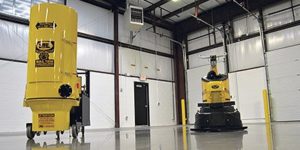Make sure your new vacuum fits the bill
Several pages into the Environmental Protection Agency’s new Renovation, Repair and Painting Rule, there is a statement pertaining to the use of HEPA certified vacuums: “HEPA vacuum means a vacuum cleaner which has been designed with a high-efficiency particulate air (HEPA) filter as the last filtration stage. A HEPA filter is a filter that is capable of capturing particles of 0.3 microns with 99.97 percent efficiency.”
Today, that’s a starting point when you’re looking for a vacuum, especially if the scope of work you perform includes renovations or demolition. In those cases, a HEPA certified vacuum may be required.
According to Chris Hudson, president of Pathfinder Concepts LLC, there are additional things contractors should consider when dealing with potentially hazardous dust: “A lot of people look at how efficient a vacuum is in picking up dust, but they don’t think about how they’re going to empty it when it’s full. Concrete dust weighs about 12 pounds per gallon. A few gallons and you’re dealing with some real weight. Additionally, if you’re releasing hazardous dust when you empty the vacuum, the HEPA filter is really a moot point.”
Some manufacturers offer vacuums that feature a bottom port to which a plastic bag can be securely attached, creating a closed system into which the operator can empty hazardous material. Another option is the Longopac bagging system, which is a similar concept – a closed system utilizing securely attached plastic bags.
“Many manufacturers offer HEPA options with their vacuums, ” says Bryon Bruington of Kut-Rite Manufacturing Co. “Just like with non-HEPA applications, contractors should consider the full scope of options when they’re choosing a vacuum.”















